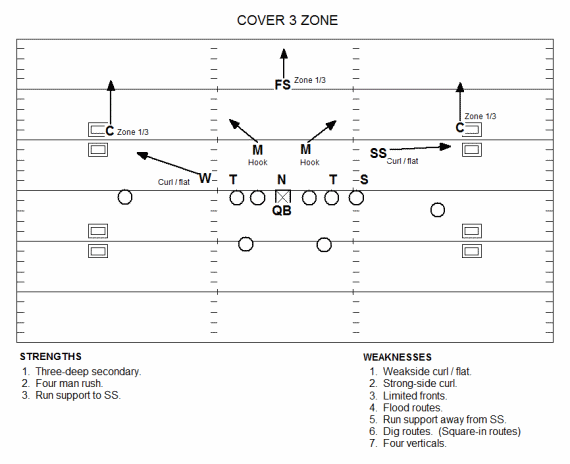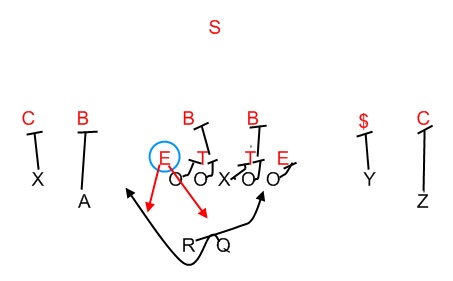|
|
Total DVOA
|
Offensive DVOA
|
Defensive DVOA
|
Special Teams DVOA
|
|
New England
|
26.7% (3)
|
16.7% (5)
|
-4.5% (9)
|
5.5% (5)
|
|
Seattle
|
30.7% (1)
|
15.5% (6)
|
-16.8% (1)
|
-1.7 (20)
|
When
looking at the Patriots-Seahawks Super Bowl matchup using Football Outsiders
DVOA metric over the full season, Seattle holds a slight, but significant edge
over the Patriots. From this perspective, the teams feature similarly talented
offenses, but Seattle’s defense is markedly better than New England’s. The
Patriots have better special teams, but that cannot make up for the massive
defensive gap.
|
|
Weighted DVOA
|
Weighted Offensive
DVOA
|
Weighted Defensive
DVOA
|
Weighted Special
Teams DVOA
|
|
New England
|
39.8% (1)
|
21.3% (3)
|
-12.4% (12)
|
6.1% (7)
|
|
Seattle
|
38.8% (2)
|
16.0% (4)
|
-25.2% (1)
|
-2.4% (17)
|
If we look
at weighted DVOA, which places more emphasis on recent performance, the
differences between the two teams almost entirely disappear. The Patriots offense improved
as the season went along, separating itself from Seattle’s. Seattle still holds
a significant advantage on defense, but the teams are more evenly matched
than total DVOA would indicate. Football Outsiders
Super Bowl odds, using weighted DVOA, suggest that the game is basically a toss-up;
the Patriots have a 50.5% chance of winning against Seattle’s 49.5%. ((FiveThirtyEight similarly sees this as a matchup of two similarly talented teams.)
I believe that
weighted DVOA is the better indicator of each team’s talent level in this
particular circumstance. Early in the season the Patriots started 2-2 before
settling on a successful combination of offensive linemen and gradually
increased the playing time of tight end Rob Gronkowski. Their later season
games are probably more reflective of their true talent level than the earlier
ones. Similarly Seattle started 3-2 before trading wide receiver Percy Harvin
to the Jets. After Seattle stopped trying to force Harvin into their offensive
game plan, their offensive play improved.
THE PATRIOTS ON
OFFENSE
|
|
Passing DVOA
|
Rushing DVOA
|
|
New England Offense
|
35.0% (5)
|
-3.6% (14)
|
|
Seattle Defense
|
-9.3% (3)
|
-25.1 (2)
|
The
Patriots and Seahawks represent philosophical opposites. The Patriots adjust
their game plans, personnel, and strategy based on the strengths and weaknesses
of their opponent. They throw the ball 50 times against Baltimore and then run
it 40 times the next week against Indianapolis. The Seahawks, however, run a
relatively simple defensive scheme and rely on their superior talent to execute
it.
Seattle runs a Cover-Three defense
(see figure below). Three defenders divide the field into three zones. This conservative
style of defense leaves four defenders to rush the passer. The remaining four
sit in the middle of the field to take away underneath passes. The Seahawks
have found success because of the talent of players like Richard Sherman and
Earl Thomas. The Seahawks defensive backs frequently win their individual
matchups against opponent’s receivers, taking away the long passing game. This
leaves eight other defenders to either stop the run or smother the short
passing game. Unfortunately for Seattle’s defense, the Patriots don’t feature a
lot of long passes down the field. Sherman will likely spend most of the game
on Brandon LaFell, potentially negating the Seahawks’ greatest advantage over
the Patriots. According to Football Outsiders’ Aaron
Schatz, from Week 11-17, the Patriots ranked second in rushing DVOA behind
only Seattle (the Patriots ranked 32nd from Weeks 1-9). This jump
was sparked by Jonas Gray’s 200 yard game against the Colts and the
reacquisition of LeGarrette Blount. Unfortunately for New England, Seattle is
also incredibly stout against the running game, ranking 2nd in run
defense DVOA.
 |
| Image from Smart Football |
Like any defensive formation, the
Cover Three has a number of exploitable weaknesses. Leaving so many defenders
to flood the middle of the field creates opportunities for offenses to stretch
the field both vertically and horizontally. The best way to accomplish this is
to bunch up receivers at the line of scrimmage. Grouping receivers allows the
offense to send them off horizontally across the line of scrimmage or on short
curl routes down the field to spread the defense out and open up the field. So watch for the Patriots to put three wide
receivers on one side of the field to overwhelm the Seahawks coverage and
complete short, 5-10 yard passes. Additionally look for the Patriots to send
Rob Gronkowski down the seam to open up these short routes as well attack the
weaker elements of the Seahawks secondary, like corners Jason Lane and Byron
Maxwell. The Patriots offensive line will need to provide Tom Brady time in the
pocket to exploit mismatches. With the probable return of center Bryan Stork, the
Patriots offensive line should be at full strength. The combination of Ryan
Wendell, Stork, and Dan Connolly, allowed half of a sack
they played together from weeks 5-15 before an injury in Week 16 forced
Connolly out of the lineup. Additionally the Seahawks do not feature a strong
pass rush. They only sacked opposing quarterbacks on 6.8% of opponent pass
attempts, good for 14th in the NFL. So Brady should have the time he
needs to execute the game plan.
THE SEAHAWKS ON
OFFENSE
|
|
Passing DVOA
|
Rushing DVOA
|
|
Seattle Offense
|
19.6% (10)
|
29.9% (1)
|
|
New England Defense
|
2.0% (12)
|
-10.4% (14)
|
Like the
Seattle secondary, New England’s defense backs will largely be wasted on a
collection of middling receivers. Darrell Revis will likely match up with Doug
Baldwin. Kyle Arrington and Devin McCourty will probably take deep threat
Jermaine Kearse, leaving penalty machine Brandon Browner to cover tight end
Luke Willson. The passing game isn’t the strength of Seattle’s offense anyway.
It’s the running game behind Marshawn Lynch and quarterback Russell Wilson. The
Seahawks rushing game ranked first in DVOA this season. Lynch ran for 1,306
yards with 13 TDs, good for 4.7 yards per carry. According to advanced metrics,
he was the second best back in the NFL with 363 DYAR (explained here).
Wilson was also an incredibly effective and efficient runner. He contributed
849 yards on the ground on 118 attempts, good for an astonishing 7.2 yards per
carry. He also ran for six touchdowns. His 284 DYAR rushing was nearly twice
that of Cam Newton, who finished second among quarterbacks with 146 DYAR.
The
Seahawks employ a zone rushing scheme that has proven especially effective. In
the NFC Championship Game, the Seahawks had 7 zone read plays for 28 yards. In
the 4th quarter and overtime, they broke through with 93 yards and
two touchdowns on 10 such plays. At its heart, the zone read is a play where
the offensive line is responsible for blocking the defenders except for the
backside defensive end (see image below). The responsibility of the quarterback
is to figure out where this defender is going. If the defensive end attacks the
running back, then the quarterback will keep the ball and run with it. If the
defensive end holds back or goes after the quarterback then the quarterback
simply hands it off. Like the Seahawks defensive philosophy, it is seemingly
very simple. Quarterback hands off the ball or keeps it. Yet it is incredibly
difficult to defend, especially against skilled and smart players like Wilson
and Lynch.
 |
| Image from Smart Football |
The
Patriots run defense has had problems this year against zone running teams.
Baltimore ran 28 times for 136 yards in the Divisional round. Teams like Kansas
City, Miami, and Green Bay also use zone blocking principles and have had
success against New England this season. As Grantland’s Bill Barnwell has highlighted,
the Patriots are seemingly content to allow short yard conversions on 3rd
and 4th down in order to take away big rushing plays. They haven’t
allowed a single rushing play longer than 34 yards all season. Yet like the
Patriots running game, their run defense made massive improvements following
their week 10 bye. From Weeks 1-9, the Patriots ranked 26th in the
league in run defense according to DVOA. From Weeks 11-17 they ranked 1st
in run defense with -28.2% DVOA. If the Patriots can play up to their post bye
level, then they have a chance to stop the Seattle running game.
In order to combat getting nickel
and dimed to death by the Seattle running game the Patriots will need to generate
pressure to force Wilson into mistakes. The Patriots, however, only sacked
opposing QBs on only 6.5% of dropbacks, 19th in the league. There
are, however, some reasons for hope. The Patriots should be able to take
advantage of the right side of the Seahawks offensive line. Right tackle Justin
Britt allowed 7.5 sacks this season. In the NFC championship game, Julius
Peppers frequently beat right guard J.R. Sweezy one on one. Additionally the
Patriots will have their best pass rusher, Chandler Jones, healthy. They will
also try to bring pressure with A-gap (the space between the center and guards)
blitzes from linebackers Jamie Collins
and Dont’a Hightower.
SPECIAL TEAMS
|
|
FG/XP
|
KICK
|
KICK RET
|
PUNT
|
PUNT RET
|
|
New England
|
10.8 (1)
|
8.4 (3)
|
0.5 (13)
|
-0.6 (18)
|
8.4 (5)
|
|
Seattle
|
0.8 (13)
|
4.5 (11)
|
-7.5 (31)
|
-4.0 (21)
|
-2.4 (15)
|
The
Patriots are better in every area of special teams. Patriots punt returner
Julian Edelman averaged 12 yards per return, second in the NFL behind Darren
Sproles. I wouldn’t be surprised if he ran a punt back for a TD. The Patriots
also blocked a number of field goals this year. They won’t be caught sleeping
if Seattle attempts a fake field goal like they did against the Packers in the
NFC Championship game.
THE PICK
Since the
advanced metrics see this game as basically a coin flip, I’m going to go with
my heart and pick the Patriots to win, 23-17.
No comments:
Post a Comment